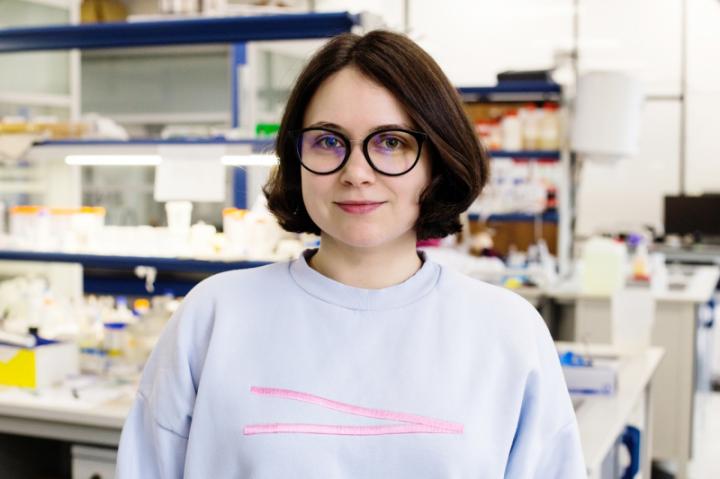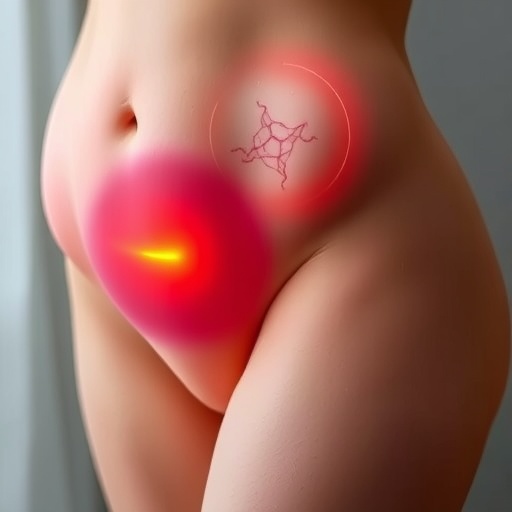This is the first ever nanorobot to combine two functions: cancer diagnostics and treatment. Made of DNA fragments, the nano-sized robot detects a pathogenic RNA strand in a gene and destroys it so cancer cells stop multiplying. And it will cost just $20!

Credit: ITMO.NEWS (https://news.itmo.ru/en/)
A group of researchers from ITMO University has come up with the concept of a new drug against cancer: a nanorobot made of DNA fragments, which can potentially be used not only to destroy cancer cells but also to locate them in the body. The research is published in Chemistry – A European Journal.
The development of effective cancer treatment drugs without severe side effects is now one of the most important tasks faced by chemists, pharmacists, and biologists. Scientists have high hopes for gene therapy, which combats mutations that occur in cells.
“DNA is the foundation of the cell, it contains its genetic material, which is needed to encode proteins that are vital for the existence of the cell,” shares Ekaterina Goncharova, a co-author of the research. “When a cell becomes cancerous, it leads to the change in the genome, after which it begins to synthesize “bad” proteins, not the ones that our body needs. As a result, the cells begin to multiply uncontrollably and the tumor grows bigger and bigger.”
However, if the production of disease-related proteins is blocked, the cancer cells will no longer be able to multiply and will start to die out. DNA enzymes called deoxyribozymes can, under certain conditions, cleave bonds in an RNA strand. The researchers decided to use this property and created the so-called nanorobots based on artificially synthesized deoxyribozymes.
“Our DNA-based nanorobot consists of two parts: a detection one and a therapeutic one,” explains Ekaterina Goncharova. “The therapeutic part destroys a pathogenic RNA strand: the more we destroy it, the less harmful protein is produced. The second part of our robot allows us to detect pathogenic cells: if there is an “incorrect” RNA molecule in the cell, our substance binds with an chemically modified oligonucleotide, which is artificially introduced into the cell, cleave it, and a fluorescence occurs.”
Another significant advantage of the newly proposed concept is its price. The creation of such a nanorobot for laboratory research costs just about USD 15 to 25.
At the moment, the experiments have been carried out in chemically created environments using the KRAS gene, which serves in most oncological diseases as a “molecular switch” for the induction of cell division. The nanorobot was able to detect a pathogenic RNA strand and destroy it. These experiments will be followed by experiments on living cells and, potentially, on animals. One of the most important problems that the researchers have to solve is how to deliver the nanorobot to the affected cells. The work on such a drug delivery system is currently carried out at various laboratories, including ITMO University.
###
Reference: Bifunctional RNA-targeting deoxyribozyme nanodevice as a potential theranostic agent. Aleksandr A. Spelkov, Ekaterina A. Goncharova, Artemii M. Savin, Dmitry M Kolpashchikov. Chemistry – A European Journal. 13 January 2020.
ITMO University (St. Petersburg) is a national research university and Russia’s number-one higher education institution in the field of information and photonic technologies. The university is a leader of Project 5-100, the Russian academic excellence program.
ITMO is the alma mater of winners of numerous international programming competitions such as ICPC (ITMO’s team is the world’s one and only seven-time ICPC champion), Google Code Jam, Facebook Hacker Cup, Yandex Algorithm, Russian Code Cup, and Topcoder Open. The university’s priority research areas include IT, Photonics, Robotics, Quantum Communications, Solution Chemistry and Advanced Materials, Translational Medicine, Urban Studies, Art & Science, and Science Communication.
In 2016, ITMO University received the UNESCO Medal “For the Development of Nanosciences and Nanotechnologies” for its unique environment that unites science, education and innovations.
Since 2016, ITMO University has been a constant feature in the world’s top 100 universities in Computer Science according to the Times Higher Education (THE) subject ranking. In 2019, the university made its debut in the world’s top 100 universities in Automation & Control, and strengthened its position in Nanotechnology (top 300) and Materials Science (top 400) in the Global Ranking of Academic Subjects (GRAS) of Shanghai Ranking (Academic Ranking of World Universities, ARWU).
According to the Quacquarelli Symonds (QS) subject rankings for 2019, ITMO University is one of the world’s top 300 universities in Engineering & Technology and Physics & Astronomy; it also became the only Russian university to be featured in the QS Art & Design subject group (top 200 universities).
In 2019, ITMO University was featured in the world’s top 500 higher education institutions according to THE and QS World University Rankings, and represented in 13 subject rankings published by ARWU, THE and QS.
IT’s MOre than a UNIVERSITY!
Media Contact
Ekaterina Boglaeva
[email protected]
896-272-63607
Related Journal Article
http://dx.




